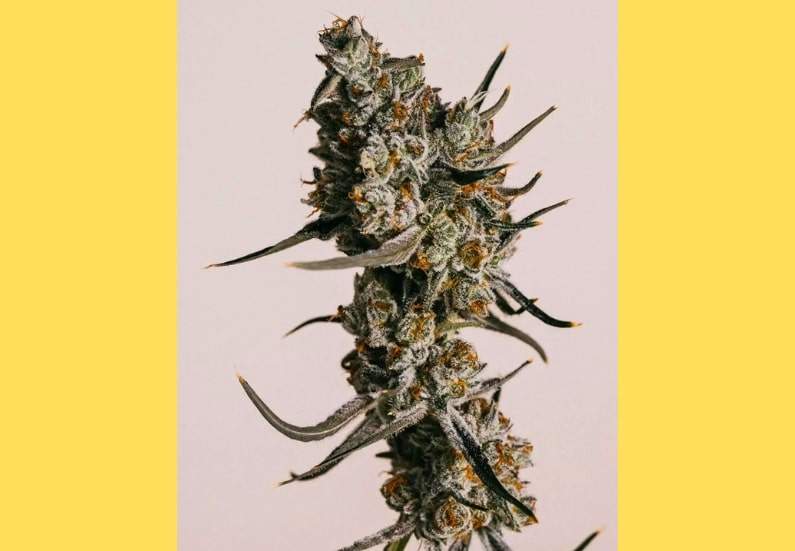
Recommended N-P-K Ratios:
Growing high-CBD cannabis strains demands careful attention to soil composition and nutrient management in order to ensure optimal vegetable health, cannabinoid content, and yield. Contrary to high-THC strains, CBD-rich cannabis plants have specific nutrient demands to maximize their very own potential. In this article, we are going to explore the best garden soil types and nutritious regimens for augmenting high-CBD cannabis.
Understanding Soil Composition intended for High-CBD Cannabis
just one. explanation for high-CBD marijuana ought to be well-aerated, nutrient-rich, and possess excellent drainage properties. Here are the key characteristics to consider:
Loamy Soil: A blend of sand, silt, and clay provides an optimal balance associated with drainage and chemical retention.
Sandy Loam: Offers excellent drainage and aeration, stopping root rot and fungal infections.
Organic-Rich Soil: High levels of organic matter (such as compost) ensure a steady discharge of nutrients.
pH Balance: The best soil pH variety for high-CBD marijuana is between 6th. 0 and several. 0 to help nutrient uptake.
two. Soil Amendments with regard to CBD-Rich Marijuana
To be able to create the great soil conditions, farmers can amend their very own soil with the particular following:
Perlite in addition to Vermiculite: Improve aeration and drainage.
Coconut Coir: Helps keep moisture while avoiding overwatering issues.
Earthworm Castings: Enhance microbes life and supply slow-release nutrients.
Mycorrhizal Disease: Encourages root development and increases nutritional absorption.
Essential goodness with regard to High-CBD Marijuana
Just like all cannabis plants, high-CBD strains demand three primary macronutrients: nitrogen (N), phosphorus (P), and potassium (K), commonly referred to as N-P-K. However, their percentage and application change slightly to enhance CBD production.
just one. Macronutrients
Nitrogen (N): Vital for vegetative growth, promoting lavish green leaves and strong stems. Nevertheless, excess nitrogen may lead to too much vegetative growth in the expense involving CBD production.
Phosphorus (P): Encourages basic development, flower formation, and resin generation, which is essential for CBD-rich trichomes.
Potassium (K): Aids overall plant health and fitness, improves resistance in order to diseases, and raises cannabinoid synthesis.

Recommended N-P-K Ratios:
Vegetative Stage: 3-1-2 or even 4-2-3
Flowering Phase: 1-3-4 or 0-3-4 (to reduce nitrogen intake and emphasis on CBD-rich marijuana production)
2. Micronutrients
Micronutrients play some sort of crucial role throughout CBD cannabis farming. These include:
Calcium (Ca): Strengthens cellular walls and stops common deficiencies love blossom end get rotten.
Magnesium (Mg): Important for chlorophyll production and energy move.
Sulfur (S): Helps in amino chemical p and enzyme generation.
Iron (Fe), Zinc (Zn), Manganese (Mn): Promote enzyme features and overall flower metabolism.
Organic compared to. Synthetic Nutrients: Which Is Better?
If choosing nutrients for high-CBD cannabis, farmers must decide in between organic and synthetic fertilizers.
Organic Vitamins (Preferred for CBD Quality)
Compost Green tea: Enriches soil together with beneficial microbes.
Species of fish Emulsion: Provides nitrogen while being soft on roots.
Softball bat Guano: Enhances phosphorus content for flowering.
Kelp and Ocean weed Extracts: Stimulate root growth and increase CBD levels.
Molasses: Passes beneficial bacteria, enhancing soil health.
Manufactured Nutrients (Fast-Acting but Risky)
Commercial N-P-K Fertilizers: Quick nutrient delivery but can cause nutrient imbalances in the event that overused.
Hydroponic Nourishing substances: Useful for soilless setups but require careful pH monitoring.
Organic methods are generally recommended intended for high-CBD strains, like they promote terpene and cannabinoid generation without chemical distraction.
Watering and Chemical Application Tips
Watering Schedule: Keep soil evenly moist but not waterlogged. Overwatering leads to root rot plus nutrient deficiencies.
Serving Frequency: Feed plant life once a 7 days during the vegetative stage and two times a week in the flowering level.
Flushing Before Harvest: Stop nutrient application 1-2 weeks prior to harvesting to boost CENTRAL BUSINESS DISTRICT purity and eradicate residual nutrients.
Greatest Soil and Nutritional Strategies for Indoor vs. Outdoor Developing
Indoor Growing
Use pre-amended organic dirt to reduce habbit on liquid nutrition.
Implement controlled feeding with compost green teas and organic dietary supplements.
Monitor humidity plus temperature to avoid mold and infestations.
Outdoor Expanding
Employ raised beds using well-draining soil plus cover crops intended for nutrient retention.
Use mulch to maintain dirt moisture and temperatures balance.
Depend on natural fertilizers like manure and worm libéralité for long-term soil health.
Realization
Choosing the best garden soil and nutrients regarding growing high-CBD hashish strains is important for producing strong, high-quality buds. By selecting a well ballanced loamy soil, using organic amendments, in addition to maintaining proper chemical levels, growers may optimize CBD generation while ensuring environmentally friendly and healthy grow growth. Whether augmenting indoors or outdoors, following these suggestions will bring about a new successful and rewarding harvest of CBD-rich cannabis.